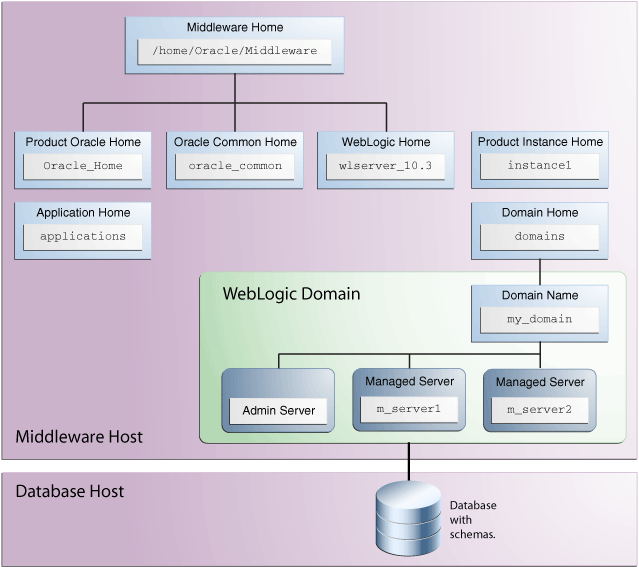| Oracle® Fusion Middleware Upgrade Guide for Oracle Business Intelligence 11g Release 1 (11.1.1) Part Number E16452-04 |
|
|
PDF · Mobi · ePub |
| Oracle® Fusion Middleware Upgrade Guide for Oracle Business Intelligence 11g Release 1 (11.1.1) Part Number E16452-04 |
|
|
PDF · Mobi · ePub |
Before you begin your upgrade Oracle Business Intelligence 11g, you should be sure that you understand the architecture, features, and benefits of Oracle Business Intelligence 11g.
Specifically, you should carefully review the information in Chapter 1, "Planning to Upgrade from Oracle BI 10g to BI 11g". Besides providing guidance on possible upgrade strategies, it also provides extensive information about the differences between the Oracle Business Intelligence components in 10g and 11g.
Refer to the following sections for additional information about Oracle Business Intelligence 11g that is of particular interest to Oracle Business Intelligence 10g users:
Section 4.1, "Oracle Business Intelligence 11g and Oracle WebLogic Server"
Section 4.2, "Oracle Business Intelligence Directory Structure"
Section 4.3, "Changes to Oracle Business Intelligence Directory Structure"
Section 4.4, "Resources for Learning About Oracle Business Intelligence 11g"
One of the more significant differences between Oracle Business Intelligence 10g and 11g is the deployment to Oracle WebLogic Server and the integration of Oracle Business Intelligence with Oracle Fusion Middleware.
For more information about Oracle Fusion Middleware Components, see Chapter 1, "Introduction to Oracle Fusion Middleware" in Oracle Fusion Middleware Administrator's Guide.
Oracle WebLogic Server Middleware Home
Oracle Business Intelligence requires a Middleware home with Oracle WebLogic Server on the system. If the system does not already have Oracle WebLogic Server, then you can install it in a new Middleware Home directory.
A Middleware home is a container for the Oracle WebLogic Server home, and, optionally, one Oracle Common home and one or more Oracle homes, with a directory structure like this:
/middleware_home
wlserver_<version>
jdk_<verion>
oracle_common
BI_ORACLE_HOME
user_projects
The BI Oracle home contains the binary and library files necessary for Oracle BI. BI_ORACLE_HOME represents the BI Oracle home in path names.
The BI Oracle home can be associated with multiple Oracle WebLogic Server domains. The Oracle Common home contains the binary and library files required for Oracle Enterprise Manager 11g Fusion Middleware Control and Java Required Files (JRF).
A Middleware home can reside on a local file system or on a remote shared disk that is accessible through a network file system.
For more information about the structure and contents of a Middleware home, see "Understanding Oracle Fusion Middleware Concepts" in Oracle Fusion Middleware Administrator's Guide.
A typical Oracle Business Intelligence installation consists of a Fusion Middleware home and the following subdirectories:
wlserver_10.3: The WebLogic Server home, which contains Java components, one Administration Server, and one or more Managed Servers.
bi_oracle_home: The Oracle Home contains binary and library files for Oracle BI.
oracle_common: The Oracle Common Home contains the binary and library files required for Fusion Middleware Control and Java Required Files (JRF). There can be only one Oracle Common home within each Middleware home.
Figure 4-1 shows the directory structure of a typical Oracle Fusion Middleware installation on a single host, using all of the default values.
Figure 4-1 Typical Oracle Business Intelligence Directory Structure

Table 4-1 describes the changes in directory structure from Oracle BI 10g to 11g.
Table 4-1 Oracle BI content changes
| Directory or Files | 10g Location | 11g Location |
|---|---|---|
|
AdminTool.sh |
BI_ORACLE_HOME/server/Bin |
BI_ORACLE_HOME/bifoundation/server/bin |
|
DBFeatures.INI |
BI_ORACLE_HOME/server/Config |
ORACLE_INSTANCE/config/OracleBIServerComponent/coreapplication_obisn |
|
NQClusterConfig.INI |
BI_ORACLE_HOME/server/Config |
ORACLE_INSTANCE/config/OracleBIApplication/coreapplication |
|
NQQuery.log |
BI_ORACLE_HOME/server/Log |
ORACLE_INSTANCE/diagnostics/logs/OracleBIServerComponent/coreapplication_obis1 |
|
Oracle BI Server repository directory:
|
BI_ORACLE_HOME/server/Repository |
ORACLE_INSTANCE/bifoundation/OracleBIServerComponent/coreapplication_obisn/repository |
|
Samples:
|
BI_ORACLE_HOME/server/Sample/samplesales |
ORACLE_INSTANCE/bifoundation/OracleBIServerComponent/coreapplication_obisn/sample/SampleAppFiles |
|
Usage Tracking:
|
BI_ORACLE_HOME/server/Sample/usagetracking |
ORACLE_INSTANCE/bifoundation/OracleBIServerComponent/coreapplication_obisn/sample/usagetracking |
|
Other Schemas (for example):
Note: Use the Repository Creation Utility to install the Oracle BI Schema |
BI_ORACLE_HOME/server/Sample/Schema |
ORACLE_INSTANCE/bifoundation/OracleBIServerComponent/coreapplication_obisn/schema |
|
OracleBIData/web/config |
ORACLE_INSTANCE/config/OracleBIPresentationServicesComponent/coreapplication_obipsn |
|
OracleBIData/web/log |
ORACLE_INSTANCE/diagnostics/logs/OracleBIPresentationServicesComponent/coreapplication_obipsn |
|
catalogmanager.exe |
BI_ORACLE_HOME\web\catalogmanager |
ORACLE_INSTANCE\bifoundation\OracleBIPresentationServicesComponent\coreapplication_obipsn\catalogmanager\runcat.cmd |
|
instanceconfig.xml (for Oracle BI Scheduler) |
OracleBIData\web\config |
ORACLE_INSTANCE\config\OracleBISchedulerComponent\coreapplication_obischn |
|
BI_ORACLE_HOME/setup |
ORACLE_INSTANCE/bifoundation/OracleBIApplication/coreapplication/setup |
For more information about Oracle Business Intelligence 11g, refer to the following:
For an introduction to Oracle Fusion Middleware, see "Introduction to Oracle Fusion Middleware for 10g Users" in the Oracle Fusion Middleware Upgrade Planning Guide.
For information about the key concepts of Oracle Fusion Middleware, see "Understanding Oracle Fusion Middleware Concepts" in the Oracle Fusion Middleware Administrator's Guide.
For information about installing Oracle Business Intelligence 11g and the components, install types, and architecture of the installation, see "Installation Overview" in the Oracle Fusion Middleware Installation Guide for Oracle Business Intelligence.
For a list of additional resources for new Oracle Business Intelligence 11g users, see "Topics of Interest in Other Guides" in the Oracle Fusion Middleware Installation Guide for Oracle Business Intelligence.